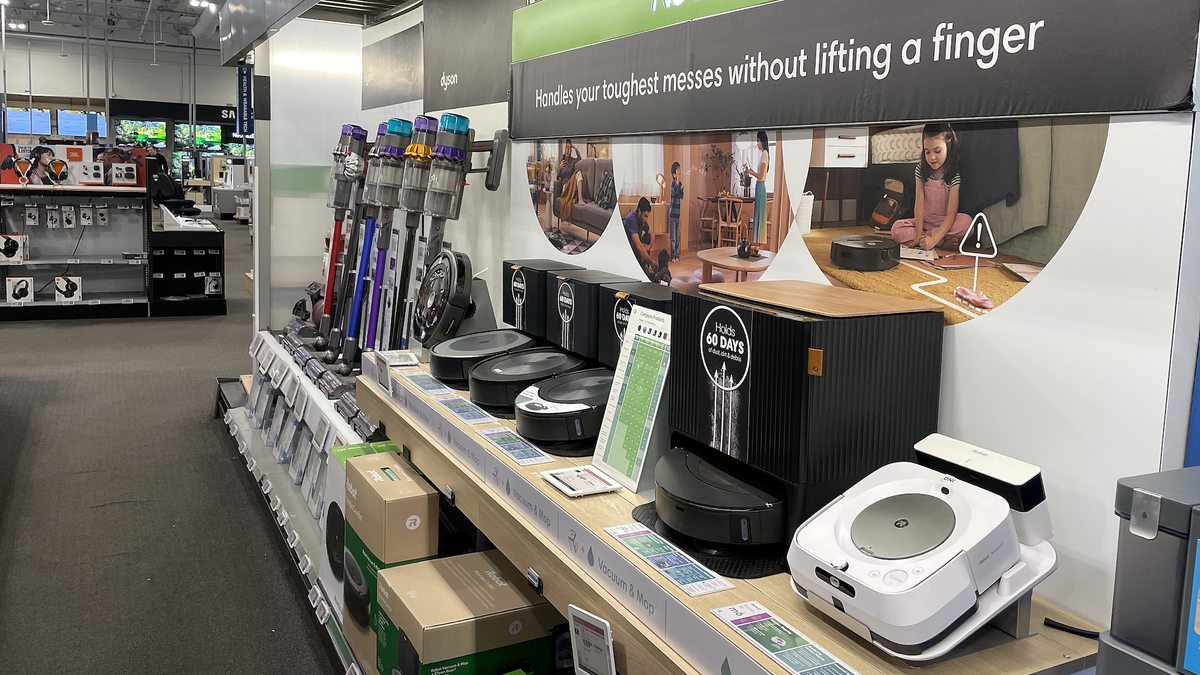Just when we think we've reached the peak of GLP-1 news — more comes in. This time, a topic once confined to the shadowy alleyways of Ozempic Reddit threads has officially gone mainstream: patients are "microdosing" the weight-loss medications.
Sure, there've been whispers of Hollywood celebrities using it to get red carpet ready, but now it's something many people are opening up about. In the context of GLP-1 medications like Ozempic and WeGovy, microdosing — a term that has been traditionally associated with psychedelic drugs — refers to taking these medications at a fraction of the recommended dose.
In case you need a refresher course, medications like Wegovy, Mounjaro, and Ozempic — all different formulations of GLP-1 receptor agonists — help regulate blood sugar and appetite by signaling fullness to the brain and delaying stomach emptying and lowering blood sugar. While they've been in the news for leading to extreme weight loss, some patients are using them for less dramatic effects.
As Caroline Messer, MD, explains, microdosing can be a game-changer for patients who are only looking to lose minimal amounts of weight or are dealing with severe side effects from standard dosing.
"In addition," Dr. Messer says, "individuals who want the anti-inflammatory benefits from the GLP-1 receptor agonists but don't necessarily want to lose any weight might consider this unique option." She adds: "Anecdotally, there appears to be an improvement in food noise and systemic inflammation, but we don't have any long-term prospective trials to prove this."
Take Chelsea, a 41-year-old navigating her own wellness journey while living with PCOS. She decided to stop taking Ozempic after six months — once she had reached her wellness goals and gotten her insulin resistance associated with her PCOS diagnosis under control.
But 18 months later, she started having concerns about her insulin resistance, and food noise and inflammation came roaring back. Seeking answers and help, she turned to Evan Blum, MD, a physician and co-founder and medical director of The Aesthetic Concierge, who introduced the concept of microdosing GLP-1 medications to get the benefits of these medications without the sole focus being on weight management.
"Microdosing GLP-1 medication has helped me better manage my PCOS symptoms like insulin resistance, as well as break free from my food noise and instead focus on the nourishing foods that my body really needs," Chelsea says.
As more patients like Chelsea try out microdosing, we went to the experts: is it legit? And is it safe?
Experts Featured in This Article
Caroline Messer, MD, is a double-board certified endocrinologist and founder of Well by Messer and Fifth Avenue Endocrinology.
Evan Blum, MD, is a practicing physician in Charlotte, NC, and co-founder and medical director of The Aesthetic Concierge.
What Does Microdosing GLP-1s Mean?
So, what's the tea on microdosing? It's pretty much what it sounds like — taking smaller doses than the usual prescribed doses. As Dr. Blum says, "Microdosing a GLP-1 means you're taking a dose that's lower than the lowest granular dose designated for weight loss."
A therapeutic dose for weight loss using a semaglutide medication (Wegovy or Ozempic) is typically 2.4 mg, and the therapeutic dose for a tirzepatide medication (Zepbound and Mounjaro) is around 15 mg. However, the starting doses — or the amount that doctors will typically start patients on, and then ramp up from there — is 0.25 mg for semaglutide medications, and 2.5 mg for tirzepatide medications. Dr. Blum shares that at his practice, "we consider microdoses below those starting point levels, but some people use the word interchangeably when referring to any of the smaller doses."
Dr. Messer tells PS that microdosing has become increasingly popular in her practice. "I have microdosed hundreds of patients," she says. "Typically, I will not start out by microdosing, but I will rather taper off the dose once an ideal body weight has been achieved and patients have made total lifestyle changes. I am also microdosing patients who are concerned about their risk for Alzheimer's disease but are already quite thin."
There are risks associated with microdosing, however — mostly because it's an "experimental and unauthorized" approach to using these medications, per UCLA Health. As Dr. Messer explains, "The major downside to microdosing is the lack of clinical trials to support its use. Only FDA-approved doses have been thoroughly vetted in clinical trials."
How Are Patients Being Prescribed Microdosing GLP-1s?
According to Dr. Messer, the "perfect fit" microdosing strategy for a patient is the dose at which a patient maintains their ideal body weight and when they're "experiencing an improvement in other symptoms."
In terms of who microdosing might work for in conjunction with advice from a doctor, Dr. Blum says there are three major factors to consider: those looking for weight maintenance, those who would like to tap into the anti-inflammatory benefits of GLP-1s, and folks who are nervous about side effects. On that latter point, Dr. Blum says, "microdosing helps us gauge if a patient will react poorly to side effects. From there, we can keep them on a low microdose and ramp up the lifestyle modifications for loss and/or understand if we take them up in dosage how to deter side effects from happening at all."
In the end, it's important to recognize that microdosing is just that — it doesn't promise the full-blown effects that taking GLP-1s at traditional doses does. "The truth is, we do see some people lose [weight] on a microdose, but it's not overly common — loss typically happens at higher doses," Dr. Blum says.
For Chelsea, microdosing her prescribed GLP-1 meds under the guidance of a trusted doctor has improved how she functions in her day-to-day life. "My inflammation has improved; I can tell that I am less swollen," she says. "My joint pain has improved as well — my TMJ pain is gone, my joints feel better, especially post workouts. My body has more energy and functions better in the day-to-day."
What Are the Dangers of Microdosing GLP-1s?
Because the practice is technically unauthorized, it's recommended to talk with a healthcare provider every step of the way.
Dr. Blum notes that all GLP-1s require a prescription. Compounded semaglutide drugs are increasingly available at places like med spas, which is something to be wary of. "If you're getting it prescribed or purchasing from a non-physician, that's a red flag and I would wholeheartedly advise against that," she says. "Dosing should be regulated at every step or change by your physician. My medical advice would be to never dose on your own on a microdose or therapeutic dose. Communication with a healthcare professional remains important with any medication, and this is no different."
Micaela English (she/her) is a lifestyle writer based in Brooklyn who's passionate about travel trends, beauty, sobriety, and wellness-based longevity. Micaela spent six years as an editor at Town and Country and has since written for Vogue, Glamour, Oprah Daily, The Zoe Report, Bustle, Well+Good, Quest, and more.

 6 months ago
120
6 months ago
120

:quality(85):upscale()/2025/11/28/816/n/1922507/96dfa0316929eb7d6009c4.58082318_.png)
:quality(85):upscale()/2025/11/28/911/n/1922564/6007a1e4692a0b7e0754d6.70992304_.jpg)





 English (US) ·
English (US) ·